E. Checklist for Hand Tool Selection
Use BOTH sides of the checklist to compare similar tools. For example, if you have two pliers and want to select the best of the two, compare each tool against the features on the checklist. The more "Yes" answers the tool has, the better the tool.
Refer to Section D, Tips for Selecting Hand Tools, for more details.
| Check if "YES" | ||||||
|---|---|---|---|---|---|---|
| Select the tool that has the most "YES" answers. | EXAMPLE | Single-handle tools | Double-handle tools | |||
| Tool1 | Tool2 | Tool1 | Tool2 | |||
| 1 | For single-handle tools used for power tasks: Does the tool feel comfortable and have a handle diameter between 1¼ inches and 2 inches? | 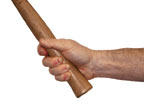 |
||||
| 2 | For single-handle tools used for precision tasks: Is the handle diameter between 1/4 inch and 1/2 inch? | 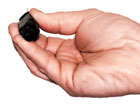 |
||||
| 3 | For double-handle tools used for power tasks: Is the grip span at least 2 inches when closed and no more than 3½ inches when open? | 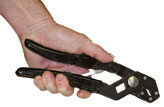 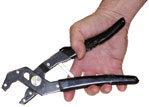 |
||||
| 4 | For double-handle tools used for precision tasks: Is the grip span no less than 1 inch when closed and no more than 3 inches when open? | 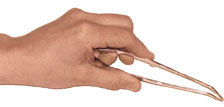 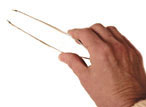 |
||||
| 5 | For double-handle tools: Is the handle spring-loaded? |  |
||||
| 6 | Is the tool handle without sharp edges or finger grooves? |   |
||||
| 7 | Is the tool handle coated with soft material? | 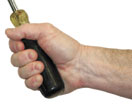 |
||||
| 8 | Can the tool be used while keeping your wrist straight? | 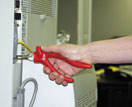 |
||||
| 9 | Can the tool be used with your dominant hand or with either hand? |  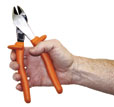 |
||||
| 10 | For high-force tasks: Is the handle longer than the widest part of your hand (usually 4 inches to 6 inches)? |  |
||||
| 11 | Does the tool handle have a non-slip surface? |  |
||||

